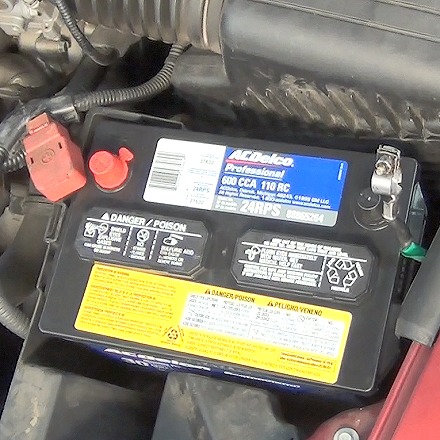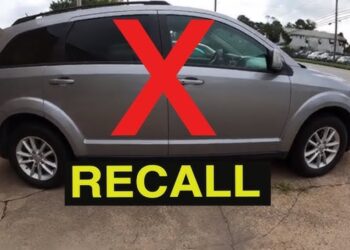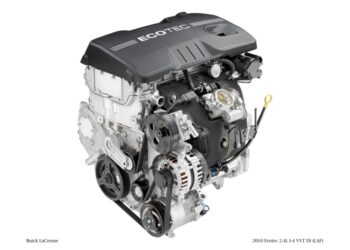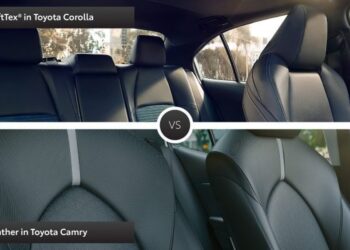A car may stall after a battery change due to disrupted electronic memory or idle speed calibration. This can trigger erratic behavior in the vehicle’s computer system.
Experiencing a stall in your car following a battery replacement can be both confusing and frustrating. Your vehicle relies on the battery not just for starting up, but also for keeping the computer and memory settings intact. When the battery is disconnected, these settings can reset, often leading to the engine’s idle speed falling out of sync.
The car’s computer, known as the Engine Control Unit (ECU), may need some time to relearn the optimal idle speed. During this relearning process, the engine may stall or run erratically. It’s crucial to understand that this is a common occurrence and, in most cases, can be resolved with a simple idle relearn procedure or by allowing the vehicle to run for a while so the computer can adjust itself.

Credit: www.reddit.com
Common Reasons For Post-battery Change Stalls
Changing a car battery seems straightforward. Yet, sometimes cars stall afterward. This issue frustrates many drivers. Here we explore common stall causes after a battery change.
Faulty Battery Installation
A poorly connected battery can lead to stalling. Loose terminals or improper seating cause power interruptions. These disruptions affect the engine’s performance.
- Check cable connections for tightness.
- Ensure the battery fits securely in its tray.
- Inspect for corroded terminals or cables.
Electrical System Reset Needs
Modern cars rely on computers. A battery change can reset these systems. The engine’s computer might need to relearn idle settings. This learning process can cause temporary stalling.
- Allow the car to idle for a few minutes.
- Drive the car to help the computer adjust.
- Consult the owner’s manual for specific reset procedures.
Address these issues to prevent post-battery change stalls. Proper installation and system resets ensure smooth engine operation.
Initial Checks And Quick Fixes
Have you changed your car battery, but now your car stalls? Don’t worry! Let’s explore some initial checks and quick fixes to solve this problem.
Terminal Connection Review
First, check the battery terminals. Are they tight? Loose terminals can cause stalling. Tighten them with a wrench. But, be gentle. Too tight can damage them.
Inspecting For Corrosion
Next, look for any green or white powder. That’s corrosion. It’s bad for connections. Here’s how to clean it:
- Turn off your car.
- Remove the battery terminals. Negative first, then positive.
- Use a mixture of baking soda and water. Apply it on the corroded areas.
- Scrub with a toothbrush. Be thorough but gentle.
- Rinse with water. Dry everything well.
- Reconnect the terminals. Positive first, then negative.
After these steps, start your car. It should run smoothly now. If not, your car may need a professional check-up.
Understanding Your Car’s Electrical System
A car’s electrical system is vital for smooth operation. A battery change can sometimes lead to stalling issues. This section explores why that might happen.
Role Of The Battery
The battery in your car serves as the power hub. It stores electrical energy necessary for starting the engine. It also powers electronics when the engine is off.
- Starting the engine: It triggers the starter motor.
- Stabilizing voltage: It helps to keep the electrical system stable.
- Powering accessories: It runs systems like lights and radio when the engine isn’t running.
Impact Of Power Interruptions
Changing a battery can interrupt power. This can reset systems and cause the car to stall.
| System | Function | Impact of Interruption |
|---|---|---|
| ECU | Manages engine settings | Loses memory; needs to relearn |
| Security | Prevents theft | May need resetting |
| Radio | Entertainment | Could lose saved stations |
A break in power supply can lead to lost settings. The car’s computer may need time to adapt again.
Resetting The Car’s Computer
After a battery change, your car may stall. This often happens due to the car’s computer losing its adaptive memory. Resetting the car’s computer can help. It relearns idle and operational settings for a smooth drive.
Step-by-Step GuideStep-by-step Guide
- Turn off all accessories in the car.
- Start the engine and let it idle for about 5 minutes.
- Turn the car off for a minute.
- Restart the engine and drive to complete the relearn cycle.
These steps allow the computer to adjust. It sets new parameters for the car’s operation post-battery change.
When to Seek Professional HelpWhen To Seek Professional Help
Seek a mechanic if stalling persists after a reset. Professional diagnostics can pinpoint hidden issues. They ensure your car’s safety and performance.
The Role Of Alternator Post-battery Replacement
The Role of Alternator Post-Battery Replacement is crucial. After changing your car’s battery, the alternator plays a key role. It charges the new battery. It also powers the car’s electrical system while driving.
Signs Of Alternator Issues
- Dim lights – The car’s lights may look weak.
- Warning light – A light on the dashboard might turn on.
- Strange noises – Odd sounds can come from the car.
- Car stalls – The car might stop suddenly.
- Weak battery – The new battery loses power fast.
Troubleshooting Alternator Problems
- Check the alternator belt – Make sure it’s tight and not damaged.
- Test the battery – Use a multimeter to test the battery’s voltage.
- Inspect electrical connections – Look for loose wires or corroded terminals.
- Listen for noises – A failing alternator may make a grinding noise.
- See a professional – If problems persist, visit a mechanic.

Credit: www.2carpros.com
Idle Relearn Procedure Explained
Changing your car’s battery can sometimes lead to stalling issues. This happens because your car’s computer loses its idle memory. The idle relearn procedure helps the computer relearn the correct idle speed. Let’s dive into what this involves.
What Is Idle Relearn?
Idle relearn is a process. It helps the car’s computer find the correct idle level. This process is essential after disconnecting the battery. It ensures smooth engine performance.
It prevents stalling and erratic idle behaviors. The car’s computer learns to manage the engine’s idle speed.
Performing An Idle Relearn
To perform an idle relearn, follow these steps:
- Start the engine and let it idle in park.
- Wait for the engine to reach operating temperature.
- Turn off all accessories like AC and radio.
- Let the engine idle for 5-10 minutes.
After these steps, the computer relearns the idle speed. Your car should run smoothly.
Maintaining Vehicle Health After Battery Change
After a battery change, your car needs proper care. This ensures it runs smoothly and stays reliable. Let’s dive into how to keep your vehicle in top shape following a new battery installation.
Regular Inspection Tips
Check your car regularly to avoid unexpected stalls. Follow these simple steps:
- Inspect belts and hoses for wear.
- Look for corrosion near battery terminals.
- Test your battery’s voltage periodically.
- Ensure your alternator functions properly.
Regular checks help spot issues early. This keeps your car dependable after a battery swap.
Importance Of Battery Maintenance
A well-maintained battery is key for vehicle health. Keep these points in mind:
- Clean the terminals to prevent power loss.
- Secure the battery firmly to avoid vibrations.
- Use distilled water for refillable batteries.
- Charge the battery if your car is idle for long.
Proper battery care helps prevent stalls and extends its life.
Professional Diagnostics And Repair
Professional Diagnostics and Repair are crucial for a car that stalls after a battery change. This unexpected issue can arise from various underlying problems. A mechanic’s expert analysis ensures a precise fix. Let’s explore when to consult a professional and what diagnostic tests involve.
When To Consult A Mechanic
- Car stalls repeatedly
- Check engine light turns on
- Car struggles to start
- Unusual noises from engine
- Electrical components fail
These signs indicate a deeper issue. Mechanics have the right tools and knowledge. They find the root cause quickly.
Understanding Diagnostic Tests
Diagnostic tests check the car’s computer systems. They reveal error codes and potential issues. Mechanics use specialized tools for these tests. Here’s what they typically involve:
- Connecting a scanner to the car’s computer
- Reading and interpreting trouble codes
- Inspecting related components
- Conducting further tests if needed
These steps help pinpoint problems. They avoid unnecessary repairs. Trust a mechanic to perform these tests accurately.
Preventing Future Stalling Issues
After a battery change, you want a smooth ride, every time. To prevent future stalling, it’s crucial to focus on your car’s overall health. Regular checks and maintenance can save you from unexpected troubles. Let’s dive into some strategies to keep your car running without a hiccup.
Long-term Vehicle Care Strategies
Stick to a maintenance schedule. Your car manual lists vital service intervals. Follow it closely.
Check fluids often. Oil, coolant, and brake fluids need regular top-ups.
Inspect belts and hoses. They can crack or wear out. Replace them as needed.
Listen for odd noises. They can signal issues. Address them early.
Use quality parts. They last longer and perform better.
Monitoring Battery Life And Performance
Test your battery twice a year. It ensures it’s charging correctly.
Clean battery terminals to prevent corrosion. It helps maintain a strong connection.
Watch for warning lights. Your dashboard alerts you to battery and charging issues.
Drive regularly. Short trips often don’t charge the battery fully.
Consider a battery maintainer if you don’t drive often. It keeps the battery charged.
Diy Vs. Professional Help
Dealing with a car that stalls after a battery change can be tricky. You might wonder if you should try fixing it yourself or call a professional. Let’s explore both options under the themes of DIY Vs. Professional Help.
Assessing Your Skill Level
Before you decide, think about your skills. Do you know cars well? Have you fixed cars before? If yes, DIY could be for you. If not, it might be best to call a pro.
- Yes – You might fix it yourself.
- No – Better to get professional help.
Cost-benefit Analysis Of Diy
Let’s look at the costs and benefits of fixing it yourself.
| DIY Benefits | DIY Costs |
|---|---|
| Save money on labor | Need to buy tools |
| Learn something new | Risk of making mistakes |
Consider this: If you make a mistake, it might cost more to fix later. Always weigh the risks and rewards.

Credit: m.youtube.com
Frequently Asked Questions
Why Does My Car Stall After A Battery Change?
After replacing a car battery, stalling can occur due to the vehicle’s computer resetting, which temporarily affects idle speed control. The system typically relearns idle settings after some driving.
Can A New Battery Cause Engine Problems?
A new battery itself typically doesn’t cause engine problems; however, incorrect installation or a mismatch in battery specifications can lead to electrical system issues affecting the engine.
What Should I Check After Changing My Battery?
Post-battery change, verify the connections are secure and corrosion-free. Check the alternator function and ensure the battery is the correct type and properly charged for your vehicle.
How Do I Reset My Car After Battery Replacement?
To reset your car’s systems after a battery replacement, start the engine, and let it idle for about 5 to 10 minutes. Then, drive as normal to allow the computer to recalibrate.
Is Idling After A Battery Change Necessary?
Idling after a battery change helps the vehicle’s computer relearn idle conditions and settings, which is beneficial for smooth engine operation and performance.
Conclusion
Changing your car’s battery should revitalize its performance, not lead to stalling issues. Remember, proper installation and compatibility checks are key. If problems persist, seeking a professional’s advice is always wise. This ensures your vehicle remains reliable and ready for the road ahead.
Keep these tips in mind for a smooth driving experience.

















